2012 Buick Regal GS Review
The Buick Regal GS’ European counterpart, the Opel Insignia OPC, doesn’t look much different, save for some funny badges and bolder alloy wheels. Under the hood, the OPC gets a 2.8L V6 with a twin-scroll turbocharger making 300 horsepower, as well as all-wheel drive.
FAST FACTS
| 1. Powered by a turbocharged 4-cylinder the Regal GS makes 270-hp and 295 lb-ft of torque. |
| 2. Along with that extra power, GS models get some revised styling, Brembo brakes, adjustable shock absorbers, a harmon/kardon audio system and a 20-inch wheel and tire package. |
| 3. Standard on GS models is an Interactive Drive Control System, letting drivers adjust suspension and steering sensitivity with a “GS” button on the dash. |
| 4. GS models start at $35, 310. |
Yet again, North Americans got robbed of the “good” power train – our top-spec Regal GS gets a 2.0L turbocharged 4-cylinder making mere 270 horsepower and 295 lb-ft of torque through the front wheels – but the boosted V6 didn’t meet North American emissions regulations. According to one Buick engineer the OPC also didn’t meet “the image we wanted to project for Buick” – whatever that means.
GOOD LOOKING CAR WITH AN IMAGE PROBLEM
Image is going to be the biggest struggle for the Regal GS. It’s a cruel fact of the marketplace that a car can be great and still succumb to poor public perception, and the list of such vehicles could fill volumes. It’s too early to tell if the Regal GS will be yet another victim (just like the Pontiac G8, another GM sedan loved by all and purchased by none), but from what we can glean after driving the car for two days, it’s certainly a worthy competitor.
The Regal GS doesn’t look that much different than a standard Regal – some chrome here and there, and a 20-inch wheel and tire package are the main visual indicators. The vehicle itself is very attractive, with a fastback-esque profile that looks distinct from everything else in the segment. The new wheels, added chrome and lower stance only enhance the overall design.
Look a little closer and you’ll see Brembo brakes up front, hiding a GS exclusive Hi-per Strut front suspension. The Hi-per strut design is still a traditional strut setup, but careful manipulation of the suspension and steering geometry allows for more docile handling characteristics in a powerful front-wheel drive car.
A STICK-SHIFT FOR ENTHUIASTS… SORT OF
Torque steer is still an issue, but greatly reduced compared to most sporty front-drivers. Step on the gas and a brief delay occurs before the turbo audible spools up and you’re shoved down the road with a fair amount of gusto. The Regal GS isn’t that quick – GM quotes 6.7 seconds to get to 60 mph – but it never feels lacking, and in-gear acceleration is always plentiful. The 2.0-liter 4-cylinder engine serves up generous portions of torque, but the 6-speed manual gearbox isn’t up to the task. The clutch is easy enough to use, but the shifter’s throws are a pastiche of every negative adjective in the auto journalism handbook – rubbery, dead-feeling, long and inaccurate. Furthermore, the pedals are totally unsuited to heel-and-toe shifting, making rev matching out of the question unless your feet are child-sized. Heretical as it may be, opting for the automatic gearbox on the Regal GS might not be a bad thing. (At launch just the manual transmission is being offered). Only the most fanatical DIY-shifting types need apply for this dreadful bit of engineering.
STILL SKEWED TOWARDS RIDE QUALITY
Much like the powertrain, the ride and handling is adequate but not thrilling. Ride quality is excellent, feeling composed and supple even on the 20” low-profile tires, while the handling part of the equation is still a bit Buick-like for a sports sedan. Steering feels extremely artificial, but weights up well at speed. A “GS” button on the dash is supposed to firm up the steering even further, and it does, but that does nothing to improve the feedback you get regarding what the front tires are doing. The Regal GS will happily tuck into corners at speed without any nervousness, but it doesn’t feel eager to do the dirty work like certain German competitors would.
The interior of the Regal isn’t bad overall, but has a very particular “General Motors” feel. Many of the buttons, cabin materials and readouts are sourced from the common parts bin, something that is barely acceptable on a vehicle that’s ostensibly positioned as a luxury car. We often found ourselves confusing the two knobs used to operate the stereo and the navigation unit, and this may be a question of familiarity, or poor design on Buick’s part. On the other hand, the navigation screen (which also displays information from the multimedia system) is clear, easy to use and has a well designed readout that avoided the “early 1990’s PC” look that some Japanese competitors are saddled with. Similarly we liked the supportive seats and the soft leather that comes as standard.
THE VERDICT
When looked at in isolation, the Buick Regal GS is a nice car. Some of the more hardcore armchair auto execs have complained about a lack of all-wheel drive, the European turbo V6 or a limited-slip differential, but the Regal GS works well on the open road, providing quick point-to-point transportation that can also be used to take friends or family members out to dinner at a nice restaurant.
In the context of the marketplace, however, the Regal GS seems a little odd. The Acura TSX V6 isn’t as exciting, but is definitely the “safer” choice (and carries none of Buick’s senior citizen brand stigma) while the Volvo S60 T5 blows the Buick away in terms of outright aesthetics and quality (the S60’s interior may well be an industry benchmark). The Lexus IS250 is nowhere near as capable as the Regal GS, but it has the right badge – a very important factor in this notoriously superficial segment. For all its merits, the Regal GS may struggle to find that distinct buyer that wants a performance Buick, and we expect that this kind of consumer will be few and far between.
Nonetheless, the Regal GS shows that Buick is on the right track, and if things keep going this way, the brand could be headed for a Hyundai-like renaissance, with a shift in public perception to follow. That may require cars like the Lacrosse, Verano and Enclave to get up to this level before the rest of the world hops on to the bandwagon, but right now, we’re glad that Buick has thrown car enthusiasts something to tide us over.
Related Reading
2010 Acura TSX V6 Review
2011 Volvo S60 T5 Review
2011 Infiniti G25 Review
2009 Volkswagen CC Review
2010 Subaru Legacy 2.5GT Review
2011 Buick Regal Turbo Review
LOVE IT
- Performance that’s real world, not just numbers
- Looks aggressive yet elegant
- Great ride and handling balance
LEAVE IT
- A manual Buick – really not as cool as you’d think
- Some corners cut on the interior
- Demographic for this car is very small
More by Derek Kreindler
















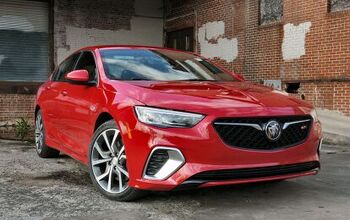
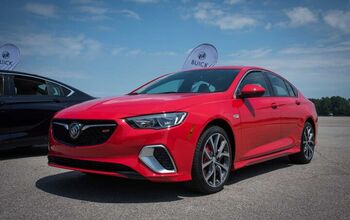
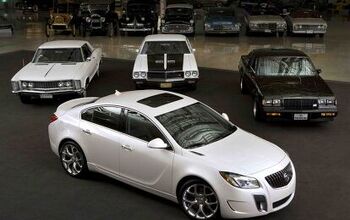
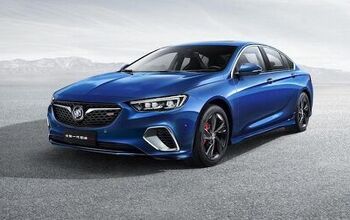




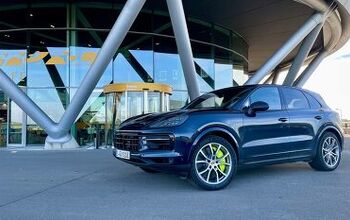

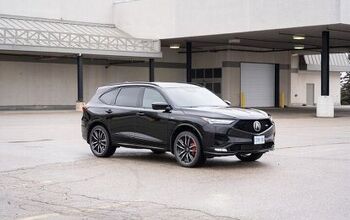




Comments
Join the conversation